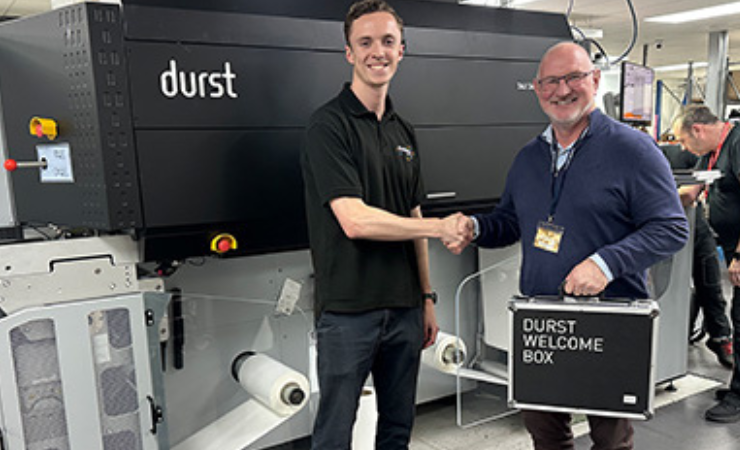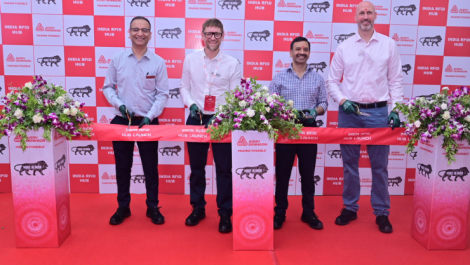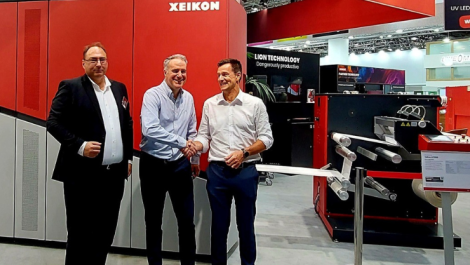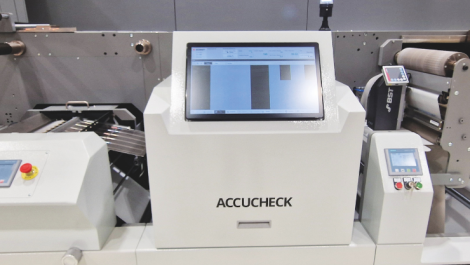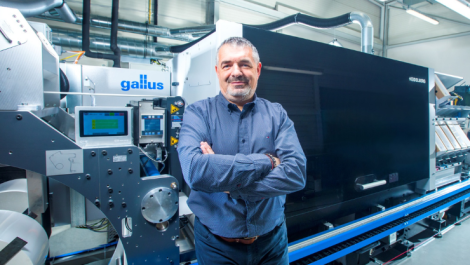A UK first is being claimed at Baker Labels, after the company installed a Durst Tau RSC 340 LED inkjet press at its Brentwood, Essex site. The press will also have Durst’s Hawk AI unit, which uses camera systems to automate print quality.
Tom Baker, finance and development at the company, said, ‘Getting the full RSC with LED curing and the Hawk AI unit to develop is an exciting challenge for us as a team and should keep us busy for a while. It’s exciting to see what’s possible and start pushing the boundaries of such an innovative product.’
The system, which has a native resolution of 1200 dpi and running speeds of 80m/min (CMYK) and 52m/min (CMYKW), was ordered at drupa and delivered on 14 October, being signed off on 25 October. Baker Labels said benefits such as print quality and sustainability played into the decision to invest.
It is part of considerable investment in new technology at the company, with an HP Indigo 6k press for the label division, plus three Galaxy Packtech pouch converters and two HP Indigo 200K presses for its flexible packaging arm BakPac, being brought in during the last 14 months. Two more Galaxy presses are planned for 2025.
‘It was clear to me from a very early stage that the Tau 340 RSC was a well-engineered press,’ commented Jamie Godson, Bakers’ technical manager. ‘It has impressed at every stage of the investment process from initial sampling, press demos right through to the install and will no doubt have a huge impact on our productivity and lead times. The running speeds are an obvious benefit, but the Tau has plenty of other tricks up its sleeve to enhance our uptime. LED curing reduces downtime during start/stops and extremely consistent head densities across the web, coupled with our internal colour management software, has shown a dramatic improvement on the consistency of repeat orders without having to tweak on press.
‘With a thinner ink laydown than what we have previously experienced, the Tau 340 RSC is capable of producing high quality tonal images and fine text, whilst still retaining the robustness and impact of traditional inkjet print.’

